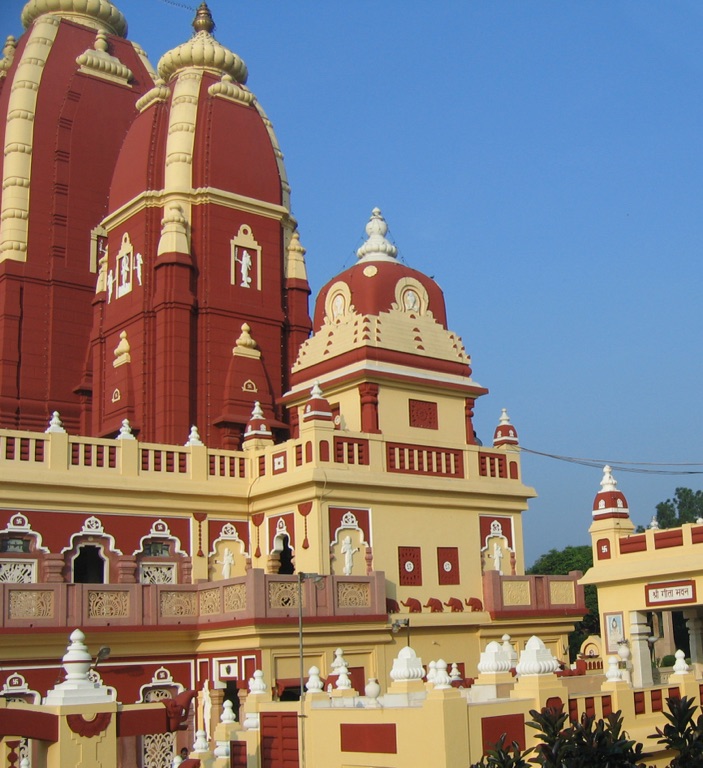Summary
Discovering the Lakshmi Narayan Temple
The Lakshmi Narayan Temple, also known as the Birla Mandir, stands as an architectural gem in the vibrant heart of India. Dedicated to the Hindu Goddess of wealth, Lakshmi, and her consort, Lord Vishnu, the temple has been a beacon of divine solace since its consecration in 1939. Made from the finest white marble, it features intricate carvings that depict scenes from Hindu mythology, offering a glimpse into the sacred stories that have shaped the culture. This revered site is not just a place of worship but also a center for cultural and social events that unite people from all walks of life.
Get your dose of History via Email
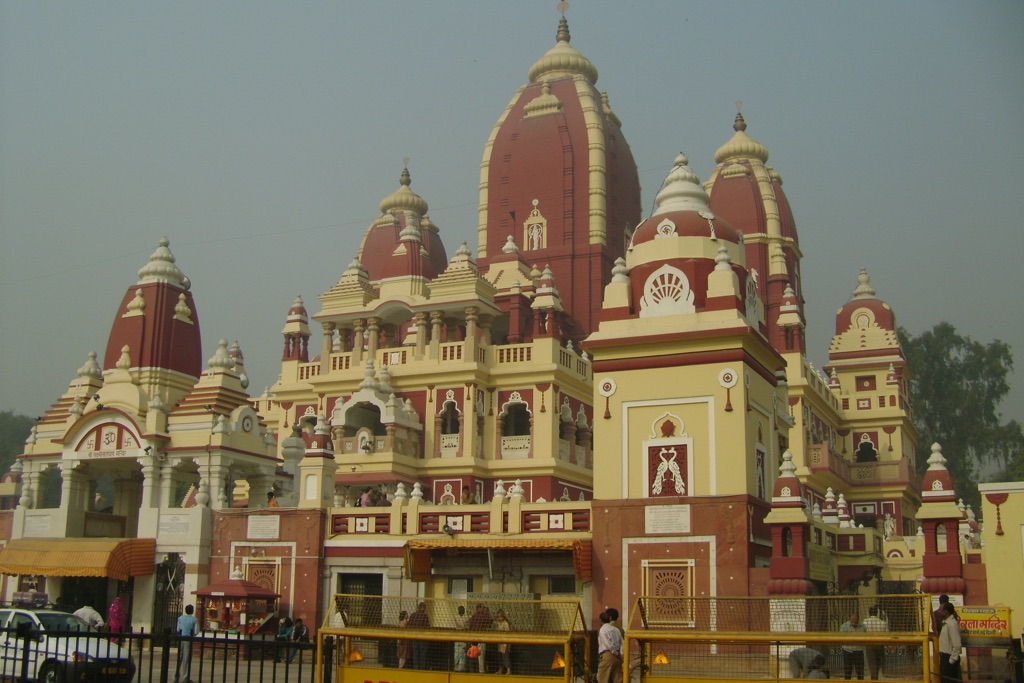
Architectural Splendor of the Deity’s Abode
Visitors to the Lakshmi Narayan Temple are met with an awe-inspiring vision of its three stories and the renowned Nagara style of Hindu temple architecture. The temple’s majestic spires and fluttering flags call the faithful to worship. This structure exudes a sense of peace that resonates through its expansive gardens and serene surroundings. With its beautiful blend of modern workmanship and traditional motifs, the temple serves as a treasure trove of craftsmanship that draws admirers from near and far. Its beauty is enhanced at night when lights cast a divine glow on the holy site, affirming its stature as a heavenly domicile.
Experiencing the Spiritual and Cultural Essence
Locals and tourists alike flock to the Lakshmi Narayan Temple not only for its religious significance but also to bask in the tranquillity it offers within bustling city life. The temple’s halls echo with the soothing chants of devoted worshippers, creating an ambience filled with spiritual fervor. Throughout the year, the temple hosts various festivals and rituals, signifying its role as a bastion of Hindu traditions. These events offer an immersive experience into the spiritual life of India, inviting everyone to partake in the temple’s harmonious spirit and the universal pursuit of spirituality.
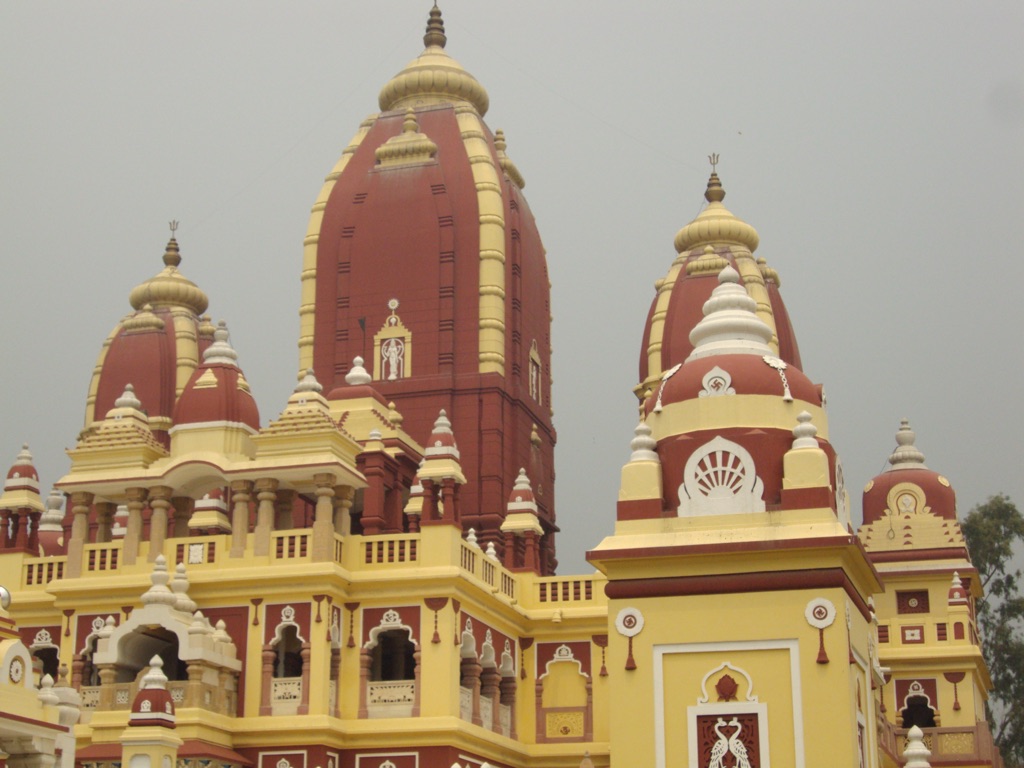
Historical Background of Lakshmi Narayan Temple
The Inception of a Sacred Monument
Nestled in the heart of India’s capital, the Lakshmi Narayan Temple’s story began in the early 20th century. The vision for this grand temple came from the industrialist family, the Birlas, who envisioned a place where all people could worship the deities Lakshmi and Narayan. In 1938, the foundation stone was laid, marking the start of an auspicious journey. Mahatma Gandhi, a figure of peace and unity, agreed to inaugurate the temple with one condition: it must open its doors to all castes, including the untouchables. Thus, the temple became a symbol of inclusivity right from its inception.
Artistry and Philanthropy Intertwined
The construction of the Lakshmi Narayan Temple is a testament to skilled artisanship married to philanthropic vision. Under the guidance of the Birlas, artisans from far and wide brought the sacred edifice to life with meticulous care and reverence. As the years progressed, the Birla family continued to champion the cause of social uplift by contributing to numerous temples and educational institutions. Their dedication established a legacy that the Lakshmi Narayan Temple proudly embodies—a legacy of spiritual elevation and social progress.
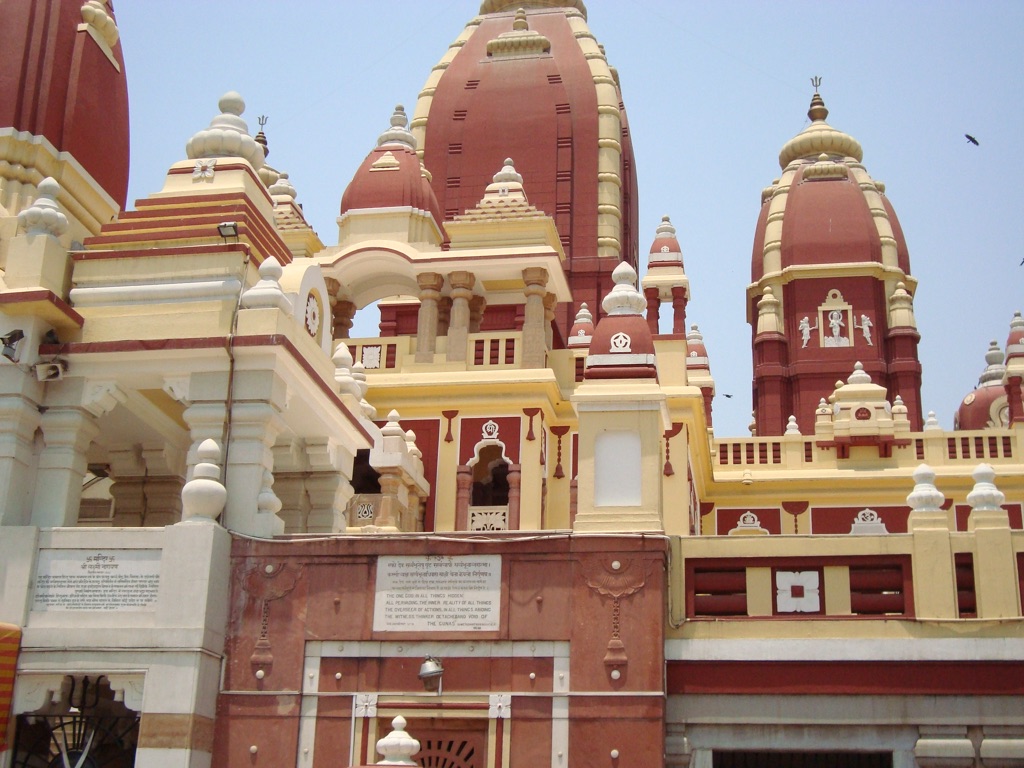
A Confluence of Style and Spirit
The architectural grandeur of the Lakshmi Narayan Temple reflects a blend of modern sensibilities with traditional ornate styles. The use of white marble and red sandstone gives the temple a celestial appearance, while the intricate carvings narrate timeless epics. The serene landscape surrounding the temple offers a reflective contrast to the bustling cityscape of New Delhi. Over the decades, the temple’s design and spiritual essence have attracted visitors from around the world, establishing its place as a must-visit destination for those seeking beauty and peace.
The Lakshmi Narayan Temple’s halls safeguard the timeless wisdom imparted in ancient Hindu scriptures. Devotees immerse themselves in the teachings through the artwork that adorns the walls. The spiritual leaders at the temple also impart these teachings, welcoming seekers of knowledge and guiding them on a path of enlightenment. The temple’s role as both an educational and spiritual hub strengthens the cultural fabric of the community it serves.
Today, the Lakshmi Narayan Temple not only stands as a beacon of faith but also as a proud emblem of India’s cultural heritage. It continues to inspire future generations to uphold the values of unity, devotion, and compassion. As the temple’s history unfolds, it promises to be a sanctuary of harmony for many years to come, inviting everyone to experience its splendor and sanctity.
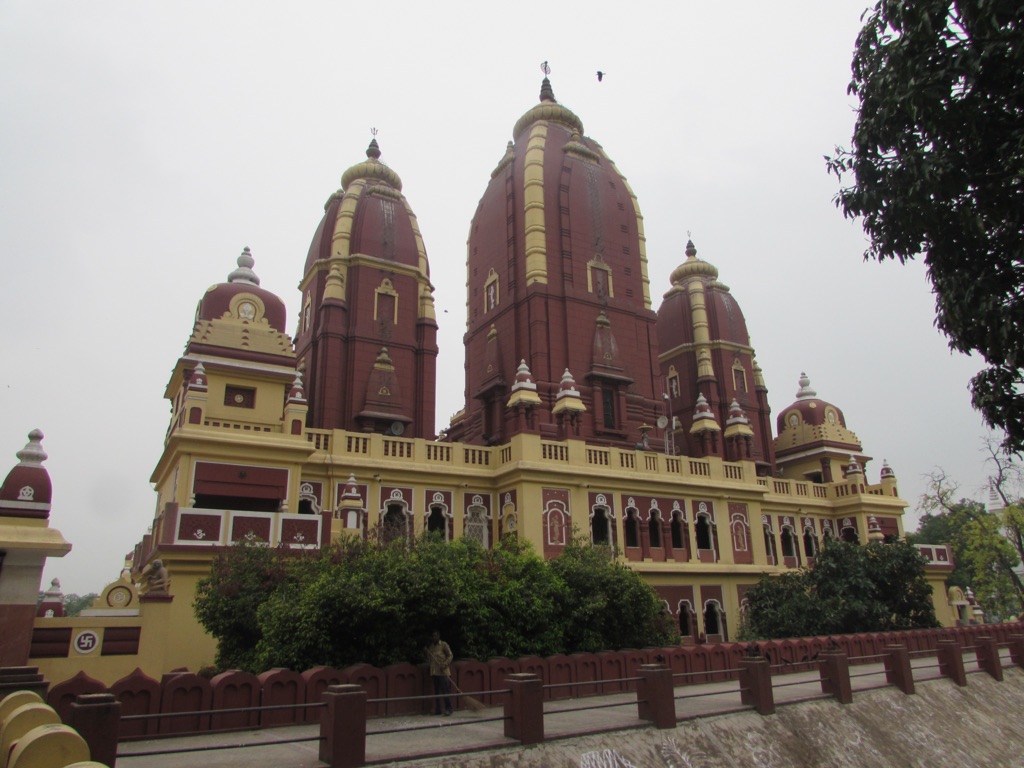
The Discovery of Lakshmi Narayan Temple
Unfortunately, there seems to be a misunderstanding. Lakshmi Narayan Temple, commonly known as the Birla Mandir, is not an archaeological discovery but rather a temple constructed in the 20th century. It was commissioned and built by the Birla family, well-known industrialists of India. Hence, there are no factual records of its “discovery” akin to that of ancient ruins or hidden monuments. The temple’s creation was a deliberate act of religious devotion and social welfare, envisioned by the Birla family.
Inception by the Birlas
The temple’s origins trace back to the vision of the Birla family, who desired to have a place of worship accessible to all without discrimination. This vision took concrete shape when the foundation stone was laid by Maharaj Udaybhanu Singh. The temple’s design and construction were carried out under the auspices of the Birlas, making it one of the first large temples built in New Delhi.
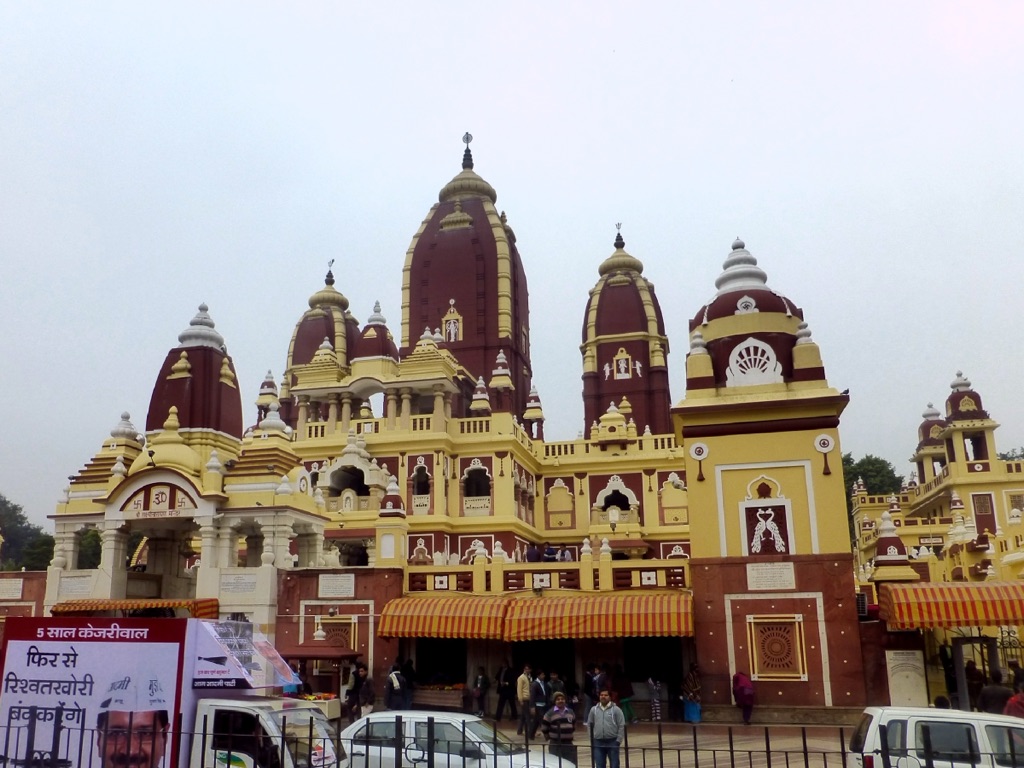
Inauguration by Mahatma Gandhi
Upon its completion in 1939, the temple was inaugurated by Mahatma Gandhi, the father of the Indian nation. Gandhi agreed to the inauguration on the condition that the temple would not be restricted to the Hindu high caste. His condition was gladly accepted, and the temple became a symbol of egalitarianism and unity from the outset.
Since the temple was constructed recently, in historical terms, there is ample documentation regarding its creation, purpose, and the individuals involved in its establishment. The Birla family continues to maintain the temple, which has grown into a major cultural and religious landmark over the years.
Today, the Lakshmi Narayan Temple stands not as a relic of the past, but as a living testament to India’s religious devotion and commitment to social harmony. It continues to draw worshippers and visitors from across the globe, adding to the fabric of India’s cultural and religious diversity.
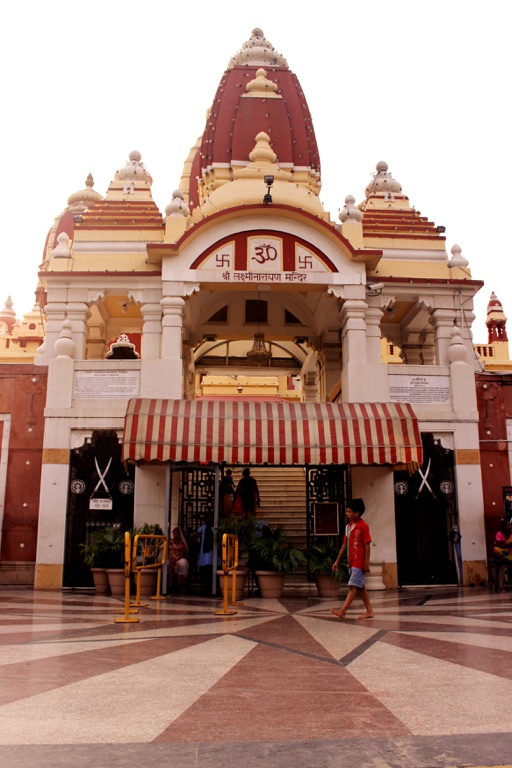
Cultural Significance, Dating Methods, Theories and Interpretations
Foundations of Cultural Heritage
The Lakshmi Narayan Temple, also prominent as the Birla Mandir, represents a significant cultural landmark in Delhi, India. Built by the industrious Birla family, the temple has been a focal point for social and religious activities since its inauguration in 1939. It reflects the syncretic essence of Hindu philosophy and upholds the values of inclusivity and equality. The temple, while modern in its origin, draws from the ancient Vedic traditions and serves as a bridge between India’s past and present cultural ethos.
Modern Methods, Timeless Wisdom
Unlike ancient temples, whose ages are estimated using carbon dating or stratigraphy, the construction dates of the Lakshmi Narayan Temple are well-documented. However, the architectural techniques employed draw inspiration from historical craftsmanship, blending them with contemporary engineering. This melding of old and new methods reinforces the temple’s status as an enduring piece of living heritage within the bustling capital of India.
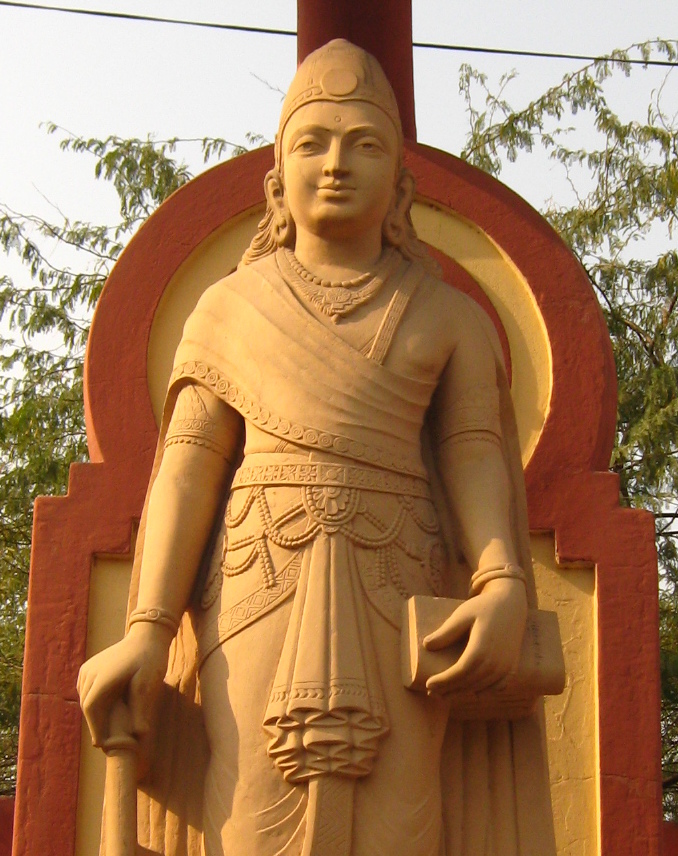
Theories and Interpretations of Divinity
The deities to whom the temple is dedicated, Lord Narayan and Goddess Lakshmi, are central figures in Hinduism signifying sustenance and prosperity. Theories about the significance of these deities delve into larger philosophical interpretations. They symbolize the universal quest for spiritual and material wellbeing. The temple architecture, with its carvings and iconography, further enriches our understanding of these divine entities, making it a key site for religious interpretation.
Central to the temple’s design is the concept of dharma, or righteous living, which is vividly depicted throughout the temple’s structure. The interpretations of the temple’s art, therefore, serve to educate and remind visitors of the paths to dharma, karma (action), and moksha (liberation). This educative aspect is woven into the fabric of the temple, imparting both cultural and spiritual significance.
As a cultural hub, the Lakshmi Narayan Temple also hosts annual festivals which showcase the dynamic and living traditions associated with Hinduism. These events are not only of religious importance but also serve to pass Hindu cultural practices onto future generations. Scholars and devotees often debate the contemporary relevance of these practices, ensuring the temple remains a site of vibrant discussion and interpretation.
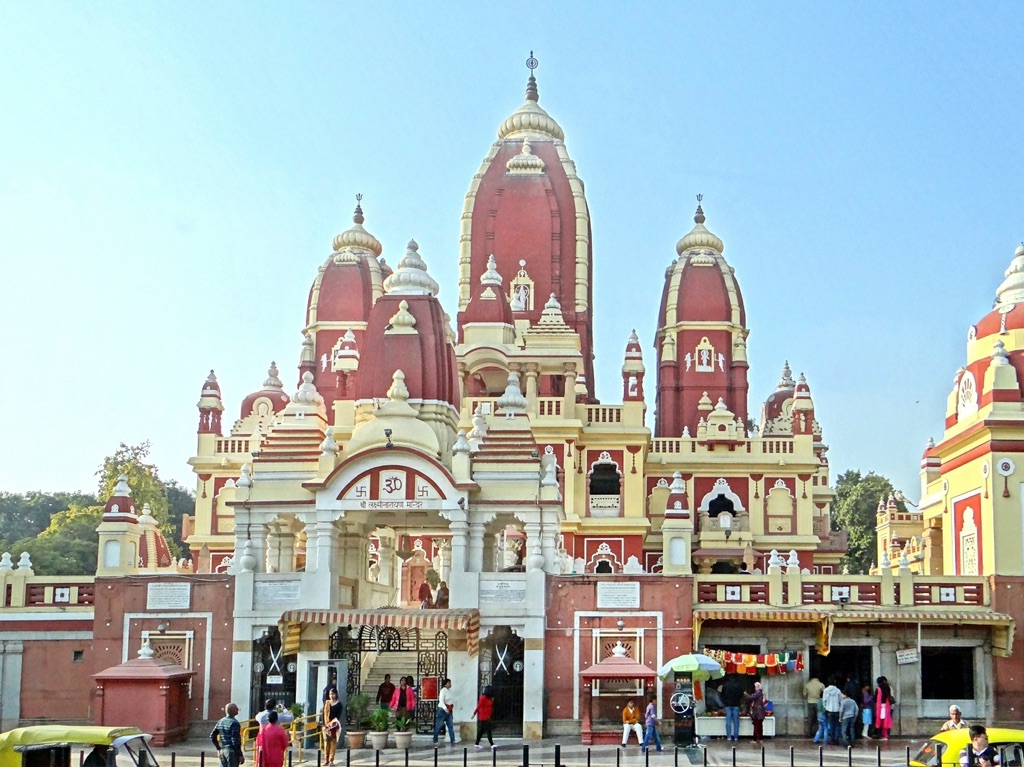
Conclusion and Sources
The Lakshmi Narayan Temple, commonly referred to as Birla Mandir, is an embodiment of cultural richness, historical significance, and spiritual unity in India. As a relatively modern edifice, it stands testimony to the ideals of harmony and inclusiveness that are central to the ethos of the country. It interweaves traditional architectural styles with contemporaneous design and construction techniques. Moreover, the temple’s dedication to educational pursuits and dialogues around spirituality makes it much more than a place of worship—it is a venue for continuous cultural exchange and learning. The ongoing interpretation of its symbolism and the annual cultural festivities it hosts perpetuate the richness of Hindu tradition and convey its significance to new audiences.
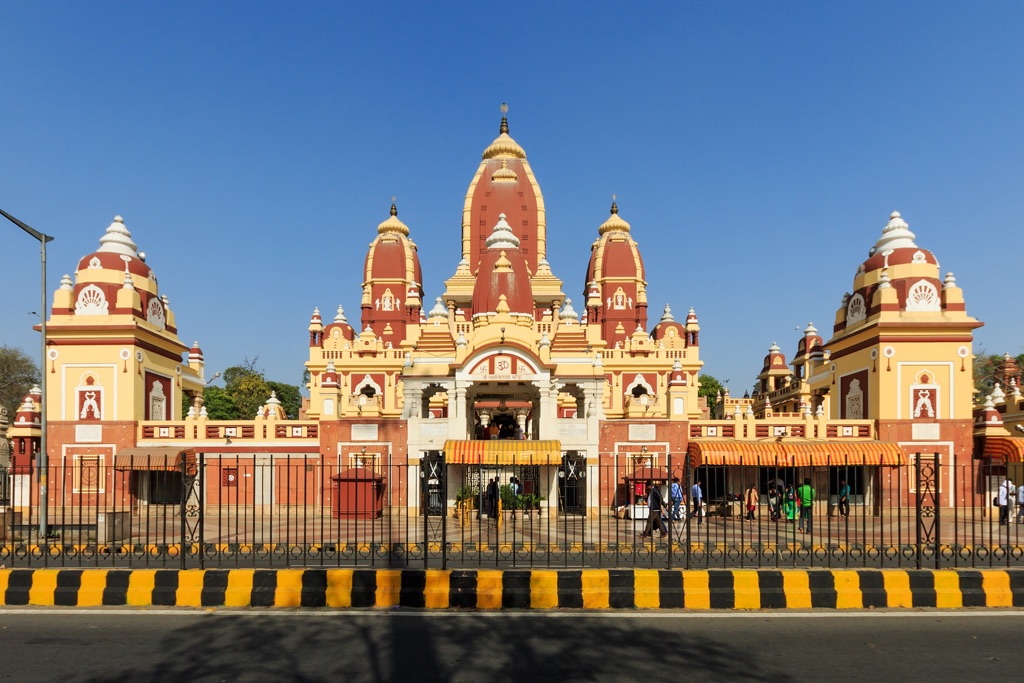
For further reading and to validate the information presented in this article, the following sources are recommended:
Or you can check any of these reputable archaeological and historical texts:
Gandhi, R. (1990). ‘Patrons of the Poor’. Calcutta: Caste and philanthropy in a modern city. OUP India.
Michell, G. (1988). ‘The Hindu Temple: An Introduction to its Meaning and Forms’. Chicago: University of Chicago Press.
Smith, D. (2003). ‘Hinduism and Modernity’. Malden, MA: Blackwell Publishing.

